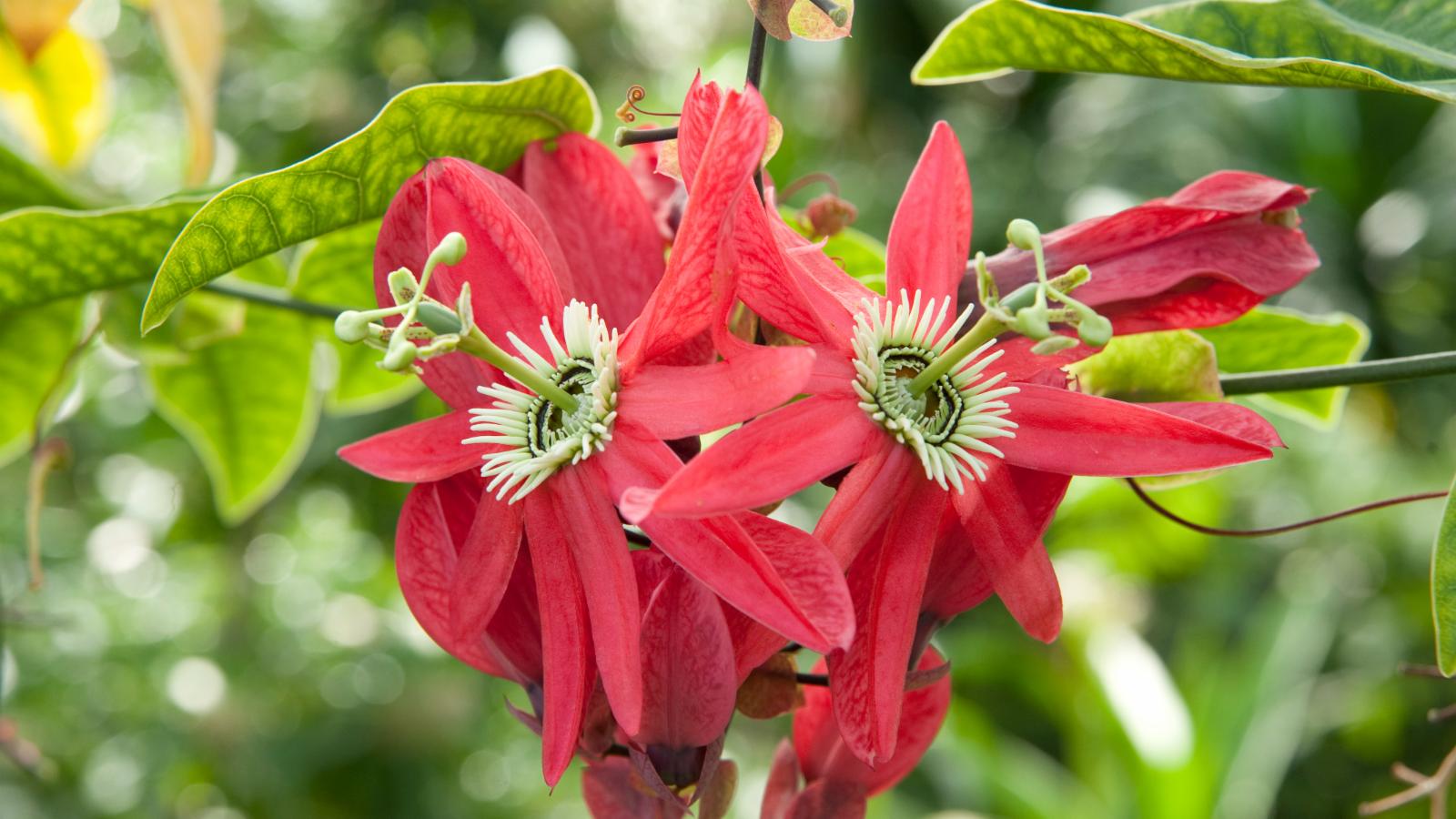Geography and distribution
Passiflora racemosa is native to the State of Rio de Janeiro, Brazil.
Description
Overview: This vine has slender stems that climb to 10 m or more, but they only reach about 5 m when grown under glass.
Leaves: The evergreen leaves are ovate, glossy, with a wavy edge and measure about 9 cm long and wide.
Flowers: The bright red flowers appear throughout much of the summer and autumn (in cultivation) and are usually borne in pairs in pendulous clusters (racemes) that reach 30 cm or more in length at the end of leafless stems, except for small, brown heart-shaped bracts, which soon fall. Individual flowers have bright red sepals (about 4 cm long and 1 cm wide), and the petals are similar but smaller. The corona filaments are in three ranks, the outer one purple with white tips, the inner ones shorter and green.
Fruits: The green, narrowly ovoid fruits are about 7 cm long and 3 cm wide.
The history behind the name
The common name, passion flower, refers to the supposed similarity between the strange shape of the flower and aspects of the crucifixion of Christ. A monastic scholar, Jacomo Bosio, having been told of the plant by Mexican monks, published an account of the passion flower, La Trionfante e Gloriosa Croce in Rome in 1610, and even today descendants of Spanish immigrants in Peru, Mexico and the Caribbean call it 'Flower of the Five Wounds'. In Christian iconography, the following connections are made: the three bracts at the base of the flower represent the Trinity; the five sepals and five similar petals represent ten apostles, Peter and Judas being absent; the corona of narrow threads represents the crown of thorns; the five stamens represent the wounds; and the three styles represent the nails used in the crucifixion.
A rather stylised red passion flower is shown with a carnation in a 16th century painting of the Madonna and Child by Joos van Cleve, but the passion flower must have been added at a later date.
Uses
Passiflora racemosa is cultivated throughout the tropics as an ornamental. It is also grown under glass in temperate climates and outdoors occasionally on patios or against a sunny wall in sheltered gardens. It has received an Award of Garden Merit from the Royal Horticultural Society. Many hybrids and cultivars have been produced.
Cultivation
Propagation of red passion flower is mainly by cuttings.
This species at Kew
Red passion flower is growing in the Princess of Wales Conservatory in the rainforest section.
Pressed and dried, and alcohol-preserved specimens of Passiflora racemosa are held in Kew's Herbarium, where they are available to researchers from around the world, by appointment. The details of some of these specimens, including an image, can be seen online in the Herbarium Catalogue.








